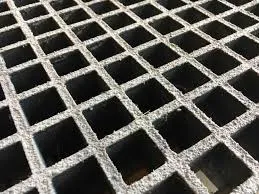
-
 Afrikaans
Afrikaans -
 Albanian
Albanian -
 Amharic
Amharic -
 Arabic
Arabic -
 Armenian
Armenian -
 Azerbaijani
Azerbaijani -
 Basque
Basque -
 Belarusian
Belarusian -
 Bengali
Bengali -
 Bosnian
Bosnian -
 Bulgarian
Bulgarian -
 Catalan
Catalan -
 Cebuano
Cebuano -
 China
China -
 China (Taiwan)
China (Taiwan) -
 Corsican
Corsican -
 Croatian
Croatian -
 Czech
Czech -
 Danish
Danish -
 Dutch
Dutch -
 English
English -
 Esperanto
Esperanto -
 Estonian
Estonian -
 Finnish
Finnish -
 French
French -
 Frisian
Frisian -
 Galician
Galician -
 Georgian
Georgian -
 German
German -
 Greek
Greek -
 Gujarati
Gujarati -
 Haitian Creole
Haitian Creole -
 hausa
hausa -
 hawaiian
hawaiian -
 Hebrew
Hebrew -
 Hindi
Hindi -
 Miao
Miao -
 Hungarian
Hungarian -
 Icelandic
Icelandic -
 igbo
igbo -
 Indonesian
Indonesian -
 irish
irish -
 Italian
Italian -
 Japanese
Japanese -
 Javanese
Javanese -
 Kannada
Kannada -
 kazakh
kazakh -
 Khmer
Khmer -
 Rwandese
Rwandese -
 Korean
Korean -
 Kurdish
Kurdish -
 Kyrgyz
Kyrgyz -
 Lao
Lao -
 Latin
Latin -
 Latvian
Latvian -
 Lithuanian
Lithuanian -
 Luxembourgish
Luxembourgish -
 Macedonian
Macedonian -
 Malgashi
Malgashi -
 Malay
Malay -
 Malayalam
Malayalam -
 Maltese
Maltese -
 Maori
Maori -
 Marathi
Marathi -
 Mongolian
Mongolian -
 Myanmar
Myanmar -
 Nepali
Nepali -
 Norwegian
Norwegian -
 Norwegian
Norwegian -
 Occitan
Occitan -
 Pashto
Pashto -
 Persian
Persian -
 Polish
Polish -
 Portuguese
Portuguese -
 Punjabi
Punjabi -
 Romanian
Romanian -
 Russian
Russian -
 Samoan
Samoan -
 Scottish Gaelic
Scottish Gaelic -
 Serbian
Serbian -
 Sesotho
Sesotho -
 Shona
Shona -
 Sindhi
Sindhi -
 Sinhala
Sinhala -
 Slovak
Slovak -
 Slovenian
Slovenian -
 Somali
Somali -
 Spanish
Spanish -
 Sundanese
Sundanese -
 Swahili
Swahili -
 Swedish
Swedish -
 Tagalog
Tagalog -
 Tajik
Tajik -
 Tamil
Tamil -
 Tatar
Tatar -
 Telugu
Telugu -
 Thai
Thai -
 Turkish
Turkish -
 Turkmen
Turkmen -
 Ukrainian
Ukrainian -
 Urdu
Urdu -
 Uighur
Uighur -
 Uzbek
Uzbek -
 Vietnamese
Vietnamese -
 Welsh
Welsh -
 Bantu
Bantu -
 Yiddish
Yiddish -
 Yoruba
Yoruba -
 Zulu
Zulu
frp shell
Exploring FRP Shells Innovations in Structural Design
Fiber Reinforced Polymer (FRP) shells have emerged as a transformative technology in the field of structural engineering, combining the strengths of lightweight materials with high durability and resistance to environmental factors. As cities move towards more sustainable, resilient, and efficient infrastructure, FRP shells are gaining popularity across various applications, from buildings to bridges and other architectural features.
FRP is comprised of a polymer matrix reinforced with fibers, which are typically made from materials such as glass, carbon, or aramid. This composite combination affords FRP shells exceptional strength-to-weight ratios, making them ideal for applications where minimizing structural weight is crucial. Additionally, the inherent corrosion resistance of FRP materials allows for longevity in harsh environments, reducing the need for maintenance and repair.
Exploring FRP Shells Innovations in Structural Design
Moreover, the use of FRP shells often results in reduced construction times. The prefabrication of components off-site means they can be manufactured in controlled environments, leading to higher quality products and minimizing on-site labor costs. Once the components are prepared, they can quickly be assembled, drastically cutting down project timelines. This is particularly beneficial in urban settings where construction delays can result in significant financial losses and disruptions.
frp shell

Sustainability is another key factor propelling the adoption of FRP shells in modern engineering. The lightweight nature of these structures means less energy consumption during transportation and installation. Additionally, when recycled or sustainably sourced materials are used in the production of FRP, the environmental footprint of construction projects can be significantly reduced.
Recent innovations have further expanded the potential of FRP technologies. Research is ongoing into enhancing the mechanical properties and durability of FRP shells, including the development of hybrid composites that incorporate additional materials for improved performance under various loading conditions. As computational design techniques and manufacturing technologies advance, the possibilities for customizing FRP shells to meet specific performance criteria are becoming increasingly sophisticated.
Despite the numerous benefits of FRP shells, challenges remain, particularly in terms of cost compared to traditional materials such as steel and concrete. However, as the market for FRP continues to mature, and as more projects successfully demonstrate their long-term value, we can expect a gradual shift in perception and increased acceptance of FRP shells within mainstream construction practices.
In conclusion, fiber reinforced polymer shells represent a significant advancement in structural design, offering a blend of strength, versatility, sustainability, and aesthetic potential. As we continue to explore and innovate within this field, the future of construction may very well be defined by the integration of FRP technology, paving the way for more efficient and sustainable infrastructures.
Latest news
-
Exploring the Benefits of Top Hammer Drifter Rods for Enhanced Drilling PerformanceNewsJun.10,2025
-
High-Precision Fiberglass Winding Machine for GRP/FRP Pipe Production – Reliable & Efficient SolutionsNewsJun.10,2025
-
FRP Pipes & Fittings for Shipbuilding - Corrosion-Resistant & LightweightNewsJun.09,2025
-
Premium FRP Flooring Solutions Durable & Slip-ResistantNewsJun.09,2025
-
Premium Fiberglass Rectangular Tanks Durable & Lightweight SolutionNewsJun.09,2025
-
Tapered Drill String Design Guide Durable Performance & UsesNewsJun.09,2025









